In their day, woolly mammoths roamed the eponymous “mammoth steppe” — today’s northern Asia, Europe, and Canada — and stuck to a vegetarian diet.
Most lists of extinct animals only include picks that vanished and have gone extinct within the last 100 years. So we’re shaking things up! Instead of sticking to the most recently extinct species, we’ve pulled our picks from all of known natural history — and then narrowed it down to the nine coolest extinct animals that we’ve ever seen.
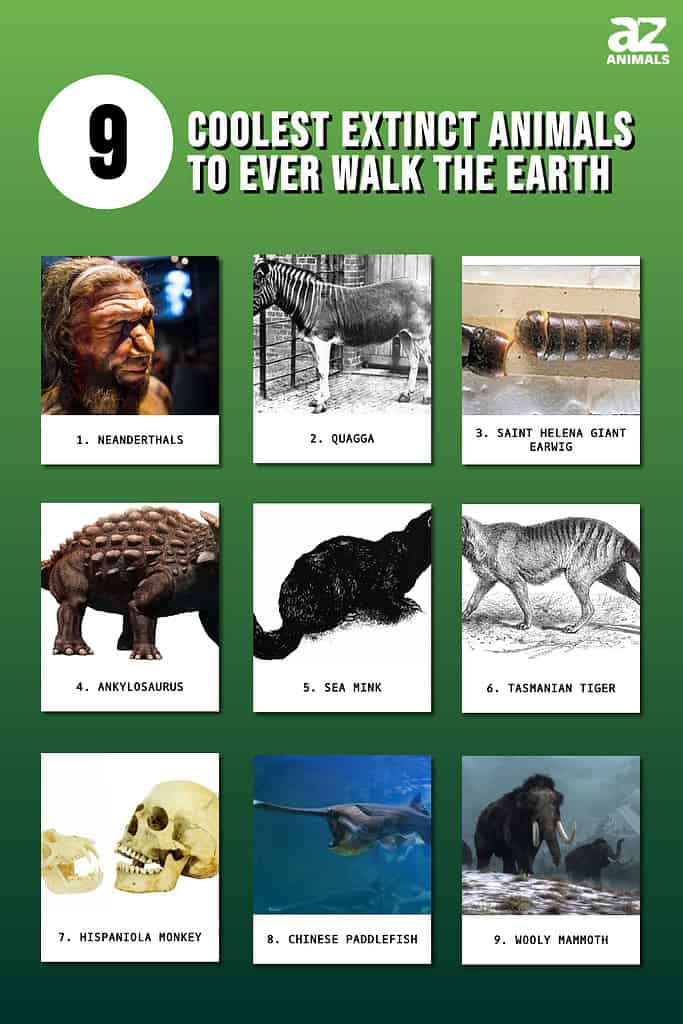
#9 Woolly Mammoth
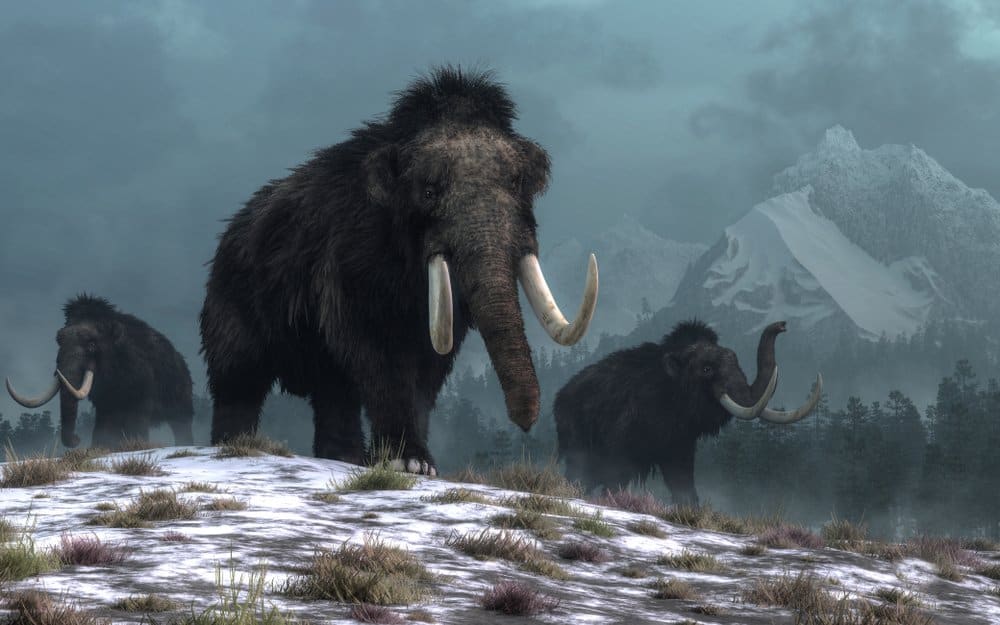
Woolly mammoths are believed to have gone extinct in 1650 BC.
©Daniel Eskridge/Shutterstock.com
Woolly mammoths lived during the last Ice Age, stood 13 feet tall, and tipped the scales at 12,000 pounds! With their shaggy fur, gigantic tusks, and long trunks, woolly mammoths looked like fur-covered elephants — but bigger.
In their day, woolly mammoths roamed the eponymous “mammoth steppe” — today’s northern Asia, Europe, and Canada — and stuck to a vegetarian diet. When conflicts arose, woolly mammoths used their sizable horns to spear opponents. Plus, the bony appendages served a practical purpose: built-in shovels.
Why Are Woolly Mammoths Memorable?
Woolly mammoths didn’t go extinct until 1650 BC and were around when Egyptians finished the Giza pyramids. Imagine being an early human who happened upon a woolly mammoth munching on some grass!? That would be pretty cool.
#8 Chinese Paddlefish
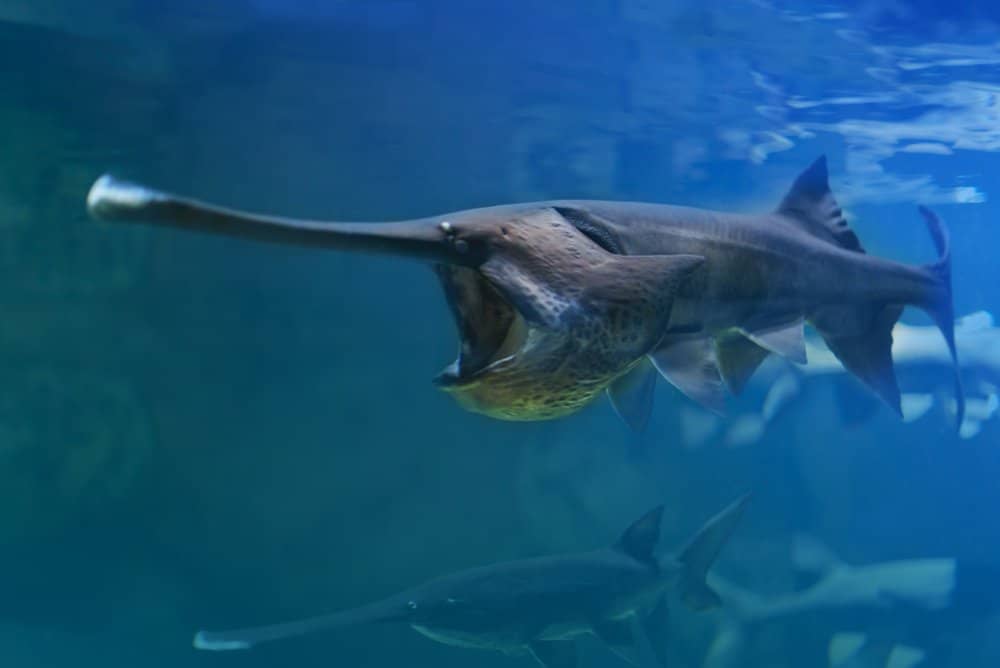
The Chinese paddlefish is largely thought to be extinct, as there have been no reported sightings since 2003.
©Natalia Belay/Shutterstock.com
Chinese paddlefish were large freshwater dwellers native to the Yangtze and Yellow Rivers. Although some disagreement lingers in the scientific community, most conservationists are confident that Chinese paddlefish are now extinct. After all, nobody has seen one since 2003.
Also known as the Chinese swordfish, the now-extinct marine species had a long, slender snout resembling a sword — except flatter and longer. In their heyday, the average individual measured about 9.8 feet (3 meters), which is large for freshwater animals.
Why Are Chinese Paddlefish Worth Noting?
Having a built-in sword is really unique. That’s why Chinese paddlefish made it to our list of extinct species. Also, Chinese swordfish may be the Elvis-Biggie-Tupacs of the underwater world: still alive but eluding human detection for decades.
#7 Hispaniola Monkey

It is believed that European exploration in the late 1400s hastened the extinction of the Hispaniola monkey.
©Evannovostro/Shutterstock.com
Hispaniola is the Caribbean Island home to both the Dominican Republic and Haiti. Back when Tudors sat on England’s throne — monkeys clambered around the tropical oasis, and one of those species was the Hispaniola monkey. Though little is known about them, primatologists are confident that European exploration in the late 1400s and 1500s precipitated the species’ demise.
Why Did Hispaniola Monkeys Make Our Cool Extinct Species List?
In 2009, a diver randomly came across a Hispaniola monkey skull in an underwater cave. The discovery provided the first tangible evidence of the species’ existence, which, up until that point, had been a mere hypothesis. That’s an incredible discovery that has earned the Hispaniola monkey a spot on our list of the coolest ancient animals that went extinct.
#6 Tasmanian Tiger
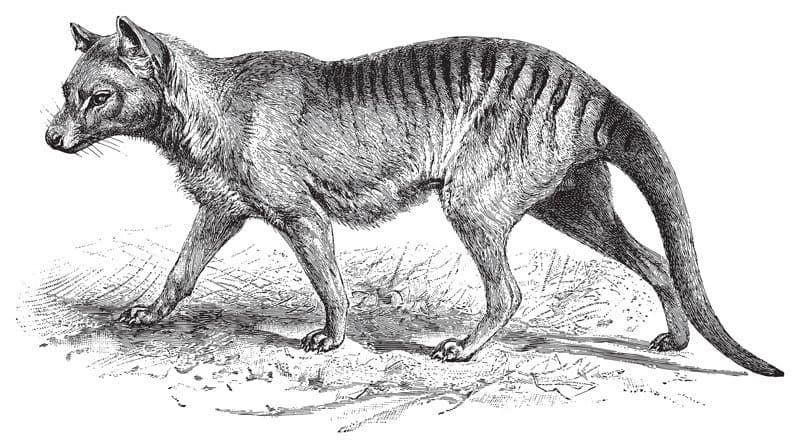
Between 1830 and 1909, a bounty was paid for Tasmanian tigers from a British company with Australian land interests.
©Hein Nouwens/Shutterstock.com
Tasmanian tigers weren’t tiger tigers; they were meat-eating marsupials who spent their days in caves and nights hunting kangaroos, wallabies, wombats, and possums.
Scientists believe the species suffered a severe decline about 2,000 years ago — but an influx of Europeans and dingoes proved to be the proverbial nail in their collective coffin. It didn’t help that between 1830 and 1909 a British company with Australian land interests paid out Tasmanian tiger bounties.
Naturalists caught the last wild Tasmanian tiger in 1933 and placed it in captivity. Since then, there have been about a dozen alleged sightings, but wildlife cameras have yet to capture any.
Why Are Tasmanian Tigers a Notable Extinct Animal?
Tasmanian tigers looked like dapper, punk-rock jackals with a hint of zebra, and they carried around their kids in kangaroo-like pouches. All of that aesthetic prowess landed Tasmanian tigers on our extinct species list.
#5 Sea Mink
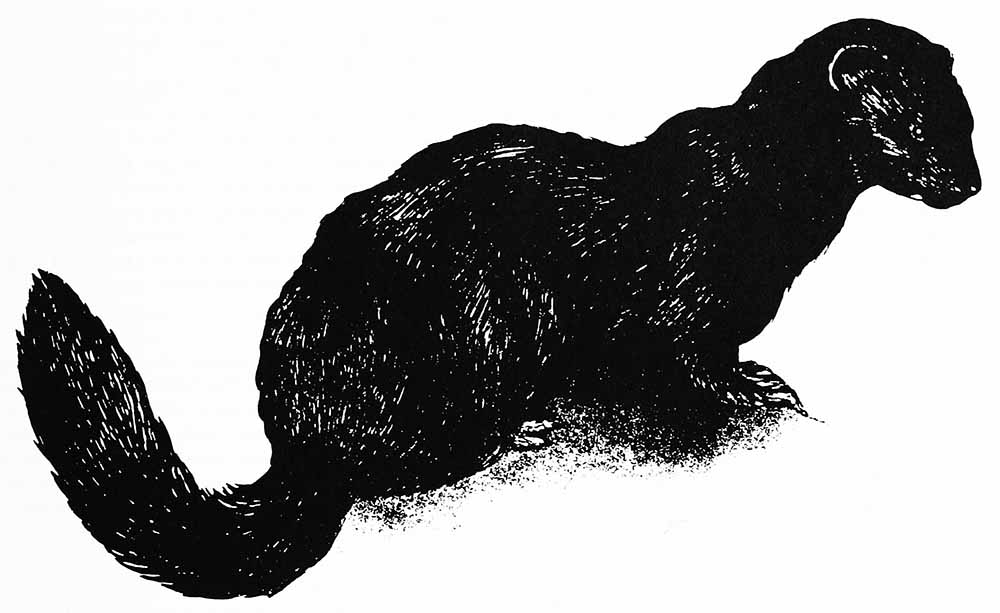
Sea minks were hunted by fur trappers and likely went extinct in the late 1800s or early 1900s.
©Internet Archive Book Images, no known copyright restrictions (public domain) – License
Judging by naturalists’ sketches, sea minks — one of the largest mink species to ever live in North America — looked like an engorged water squirrel. Found near the Gulf of Maine and along the eastern Canadian coast, sea minks were heavily hunted by fur trappers and likely went extinct in the late 1800s or early 1900s.
Years after extinction, researchers debated its taxonomic roots. Around 2003, the conflict reached a fever pitch when two competing papers circulated. One insisted sea minks were an offshoot of American minks; the other argued they were a distinct species. In the end, the “separate species” side won, and, in 2007, the scientific powers that be changed the animal’s taxonomy. Based on sketches of what it may have looked like, sea minks could be considered the more cute extinct animals to make our list.
What Makes Sea Minks So Cool?
To survive in frigid Atlantic Northeast waters, you’ve got to be hardcore — and if scientists’ speculation about the species is accurate, sea minks spent oodles of time in that polar-tinged ocean. That takes a magnificently engineered physiology, which is…you got it…really cool.
#4 Ankylosaurus

The Ankylosaurus was a herbivore that weighed about five times as much as a Kia.
©Warpaint/Shutterstock.com
When you think of the before times (not the COVID before times, the before-before times) — when homo sapiens were still a twinkle in Mother Nature’s eye — what animals immediately come to mind?
That’s right: Dinosaurs!
Usually, Tyrannosaurus rexes, Brontosauri, and Velociraptors get the most love, but we’re going with Ankylosaurus — the 26-foot long, 18,000-pound behemoth that lumbered around the Pacific Northwest about 68 million years ago. Although these natural knights in armor could clobber with the best of them — and weighed five times as much as a Kia — Ankylosaurus were herbivores that didn’t eat meat!
Why Is Ankylosaurus so awesome?
Ankylosaurus rocked built-in armor that covered their heads and backs. Plus, a huge hammer capped their tails. Armor and a built-in hammer? Not only is that awesome, but it wins the gargantuan dinosaur a spot on our list of extinct animals.
#3 Saint Helena Giant Earwig
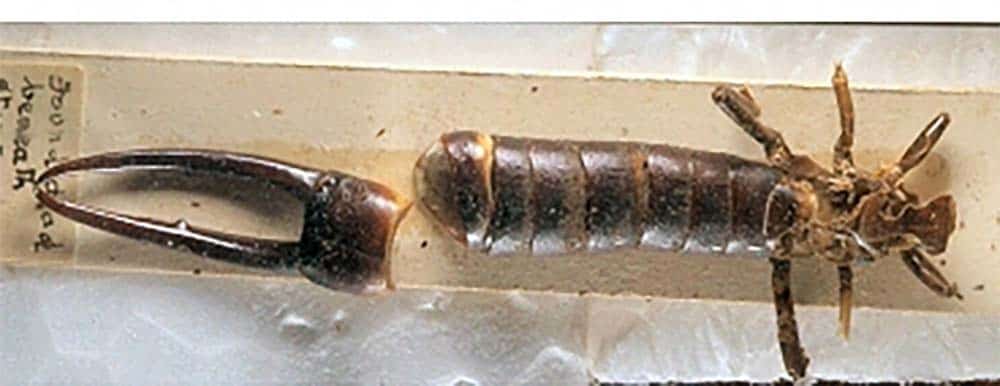
The Saint Helena giant
earwig
was first discovered in 1798 and extinct by 1967.
©Roger S. Key / CC BY-SA 3.0 – License
When humans talk about extinct species, we typically stick to mammals, fish, and birds — but what about insects!? To put things in perspective, out of a million known insects, scientists have only studied around 8,900 species. However, conservationists estimate that 5 to 10 percent of all insect species have gone extinct since the Industrial Revolution! That’s a whole lot of insect death.
This is why we wanted to make sure they were represented on our animals that went extinct list.
In 1798, a Danish entomologist first noticed the crawlers. But by 1967, not a single one remained. In 1982, the Saint Helena Philatelic Bureau honored the fallen insect with a commemorative stamp.
Why Did Saint Helena Giant Earwigs Make Our List?
In its time, Saint Helena giants were the largest earwig in the world, and according to a scientist from the London Zoo, females of the species were “extremely good mothers.” Large and compassionate bug moms? Of course, they made our list of the top 10 coolest extinct species!
#2 Quagga
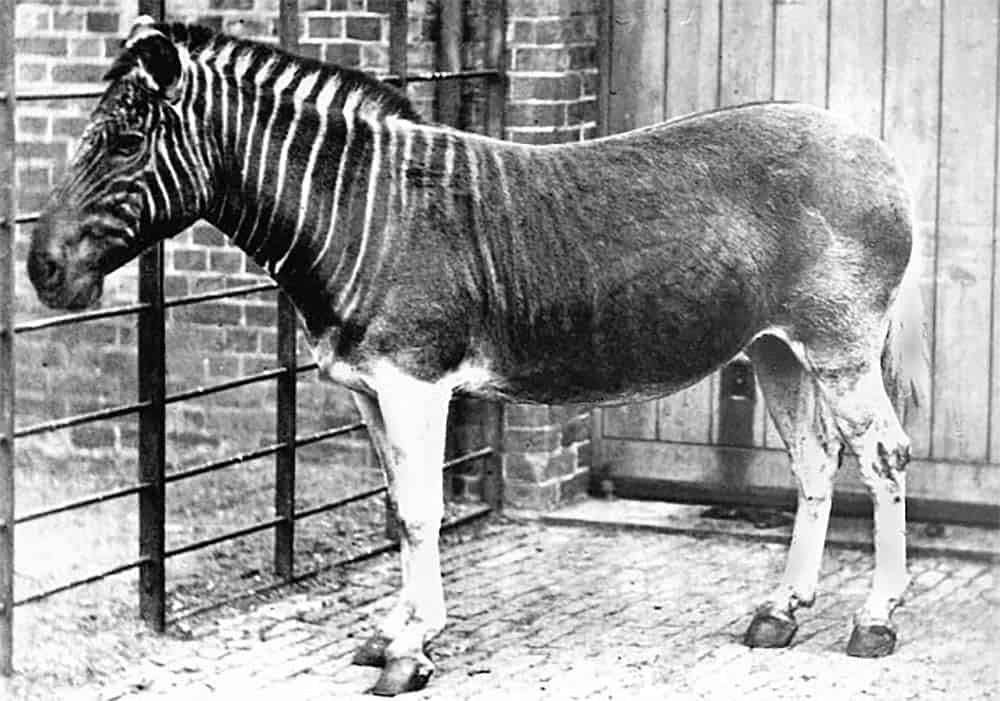
Quaggas were once considered for domestication but were hunted to extinction in the 1800s.
©Frederick York (d. 1903) / public domain – License
Yes, once upon a time, a zebra horse roamed South Africa. Called quaggas, their coolness quotient is right up there with ligers‘.
Quagga comes from the Khoekhoe language and reportedly derives from the animal’s vocalization, which sounded like “kwa-ha.”
Little is known about quaggas, except that their stripe numbers vacillated, and the population drastically decreased when Dutchmen settled their historical range. At one point, they were prime candidates for domestication, but hunting continued. By the late 1800s, quaggas were wiped out.
A Zebra-Horse: Need We Say More?
Not only does the quagga have zebra-like stripes on the front half of its body, but it’s also got a natural mohawk. There’s only one word for that: awesome!
#1 Neanderthals
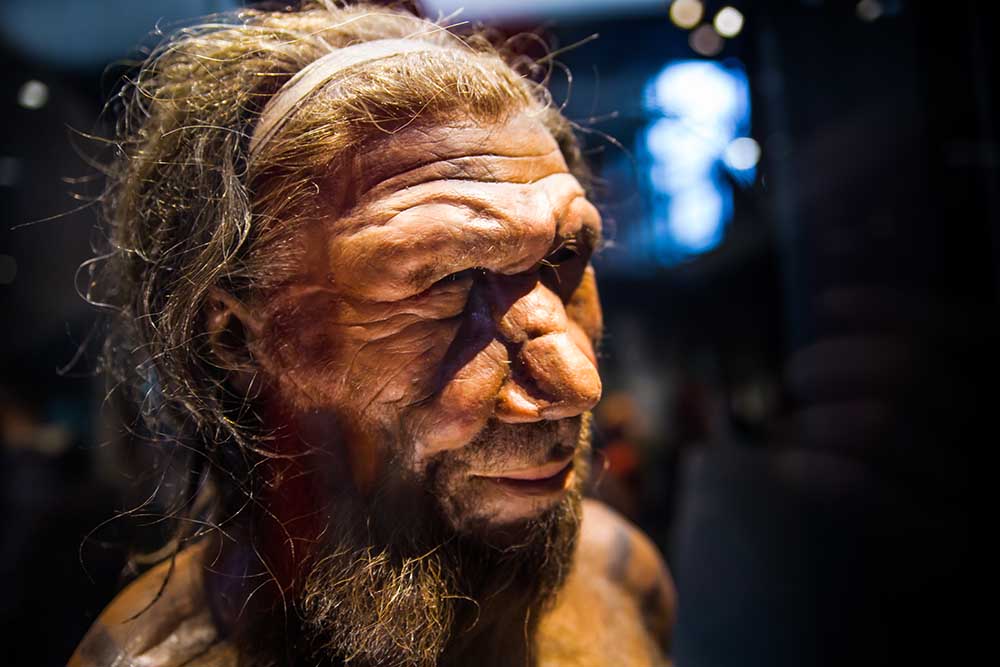
Neanderthals are widely believed to have existed alongside modern humans for some time.
©IR Stone/Shutterstock.com
Around 40,000 years ago, another hominid ruled the animal kingdom roost: Neanderthals! In 1829, archeologists first discovered fossils of the hominid species in Germany. Since then, scientists have done extensive research and are now sure Neanderthals existed alongside modern humans for some time.
Even crazier: we still carry around their genetic legacy. Homo sapiens sapiens and Homo neanderthalensis interbred, so today, 20 percent of Neanderthal genes persist in modern humans’ DNA.
Why Do Neanderthals Deserve Our Respect?
Neanderthals learned how to make and use tools, which catapulted people to the food chain’s summit. As thanks, we’re honoring the extinct species on our roster!
And there you have it: the top 9 coolest extinct species that once occupied Earth. Next up, let’s take a look at the 10 fastest animals currently torpedoing across and through our lands, oceans, and skies.
Runner-Up: Mysterious Starling
Everyone enjoys a good mystery, right? Well here’s a member of the bird family that has been the source of much speculation. The mysterious starling, originally found on the island of Mauke in the Cook Islands, was discovered by an ornithologist in 1825. It resembled a Rarotonga Starling, but smaller, sporting dusky black feathers with lighter brown feather edges. 150 years later when scientists returned to study the breed more closely, it had mysteriously disappeared. They attributed the disappearance of these cute extinct animals to the introduction of brown rats on the island. But who knows for sure?
Bonus: Three More Cool Extinct Animals
Our survey of cool extinct animals wouldn’t be complete without a star of the silver screen, a fabled fantasy legend, and a weirdly punk fish!
Smooth Handfish

The Smooth Handfish was declared extinct in 2020.
©be_u_and_i/Shutterstock.com
Only 200 years ago, the waters around Australia were teeming with the strange and very cool smooth handfish. Named for its front fins’ resemblance to human hands – these fish rocked mohawk-style fins on their heads and looked like they needed a guitar to hammer out some metal. Their close cousins, the red handfish, continue to rock the oceans down under. The smooth handfish was declared extinct in 2020 with only one preserved specimen in existence.
Dire Wolf

Dire wolves were roughly the size of the extant gray wolf, but with a heavier build.
©iStock.com/Aunt_Spray
The books and television series, Game of Thrones, elevated the dire wolf to stardom and its current cool status. You may have thought the Stark children’s pets were the stuff of fantasy – but dire wolves were real creatures that roamed the earth not too long ago. They lived among the saber-toothed tiger and the wooly mammoth during the Late Pleistocene and Early Holocene epochs, 125,000 – 9,500 years ago. With a range extending from the Americas to eastern Asia – these big wolves were not as large as depicted on TV – they were about the same size as modern gray wolves – only heavier and with larger teeth and stronger jaws. Those big teeth and powerful jaws were instrumental in taking down massive prey like mastodons, ancient bison, huge ground sloths and western horses. The dire wolf’s dependency on those megaherbivores may have contributed to its extinction after they died out. Climate change may have also contributed. The last remains of dire wolves are dated as recently as 9,500 years ago.
Megalodon

Megaladon weighed as much as 30 large great whites, reached up to 60 feet in length, and ate 2,500 pounds of food each day!
©Warpaint/Shutterstock.com
Like the dire wolf, Megalodons have achieved star status after being featured in the media – namely the 2018 movie, The Meg. Megalodons grew to nearly 60 feet (18 meters) in length – three times longer than the largest great white on record. These monsters had teeth that were nearly 8 inches (18 centimeters) long – inspiring scientists to name them Megalodon – meaning large tooth. With teeth like that, you can bet that the Megalodon chowed down on some big fish – most likely whales and other sharks. Its huge jaws were lined with 276 of those sharp teeth with a bite force indicating it to be one of the most powerful predators ever to exist at 40,000 pounds per square inch! (Compare that to the current bite force champ, the great white shark at 4,000 PSI). Megalodons are thought to have gone extinct less than 4 million years ago. Their fossilized teeth have been found on every continent except Antarctica.
Can Bringing Back Wooly Mammoths Help Stop Climate Change?
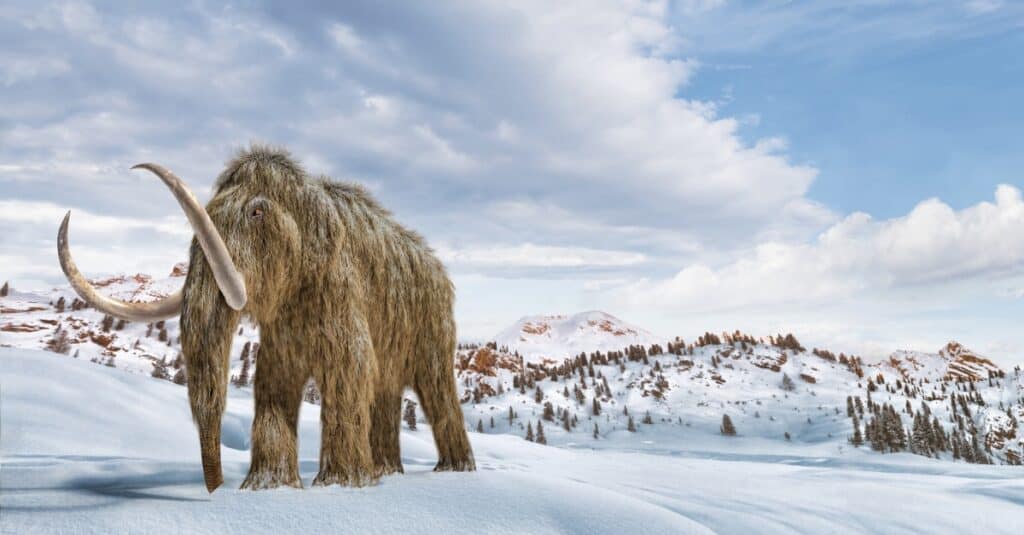
Groups of scientists all over the world are working to bring back the wooly mammoth.
©iStock.com/leonello
During the Pleistocene epoch or Ice Age, there was an environment that stretched from Spain across Europe and over the Bering Strait to Canada. Covered in grasses and mostly devoid of trees, it was populated by bison, reindeer, tigers, and wooly mammoths. Both the mammoth and its steppe ecosystem have long disappeared – but groups of scientists are working to clone living elephant cells to contain synthesized mammoth DNA to bring the wooly mammoth back to life. Why? They believe that reintroducing the mammoths back to Arctic tundra environments could help to recreate the steppe ecosystem. This would keep the permafrost from thawing – which would release deadly amounts of methane into the atmosphere. Wooly mammoths coming back from extinction to save the world – how cool is that?
Summary Of The 9 Coolest Extinct Animals
Let’s look back at the animals that made our list for not only being extinct but also very cool animals we wish were still in existence today:
| Rank | Extinct Animal | Time Period/Extinction Date |
|---|---|---|
| 1 | Neanderthals | 40,000 years ago |
| 2 | Quagga | 1800’s |
| 3 | Saint Helena Giant Earwig | 1967 |
| 4 | Ankylosaurus | 68 million years ago |
| 5 | Sea Mink | late 1800’s – early 1900’s |
| 6 | Tasmanian Tiger | Early 1900’s |
| 7 | Hispaniola Monkey | 1500’s |
| 8 | Chinese Paddlefish | 2003 (last sighting) |
| 9 | Wooly Mammoth | 1650 BC |
The photo featured at the top of this post is © Baker; E.J. Keller. / public domain – License / Original
Thank you for reading! Have some feedback for us? Contact the AZ Animals editorial team.






